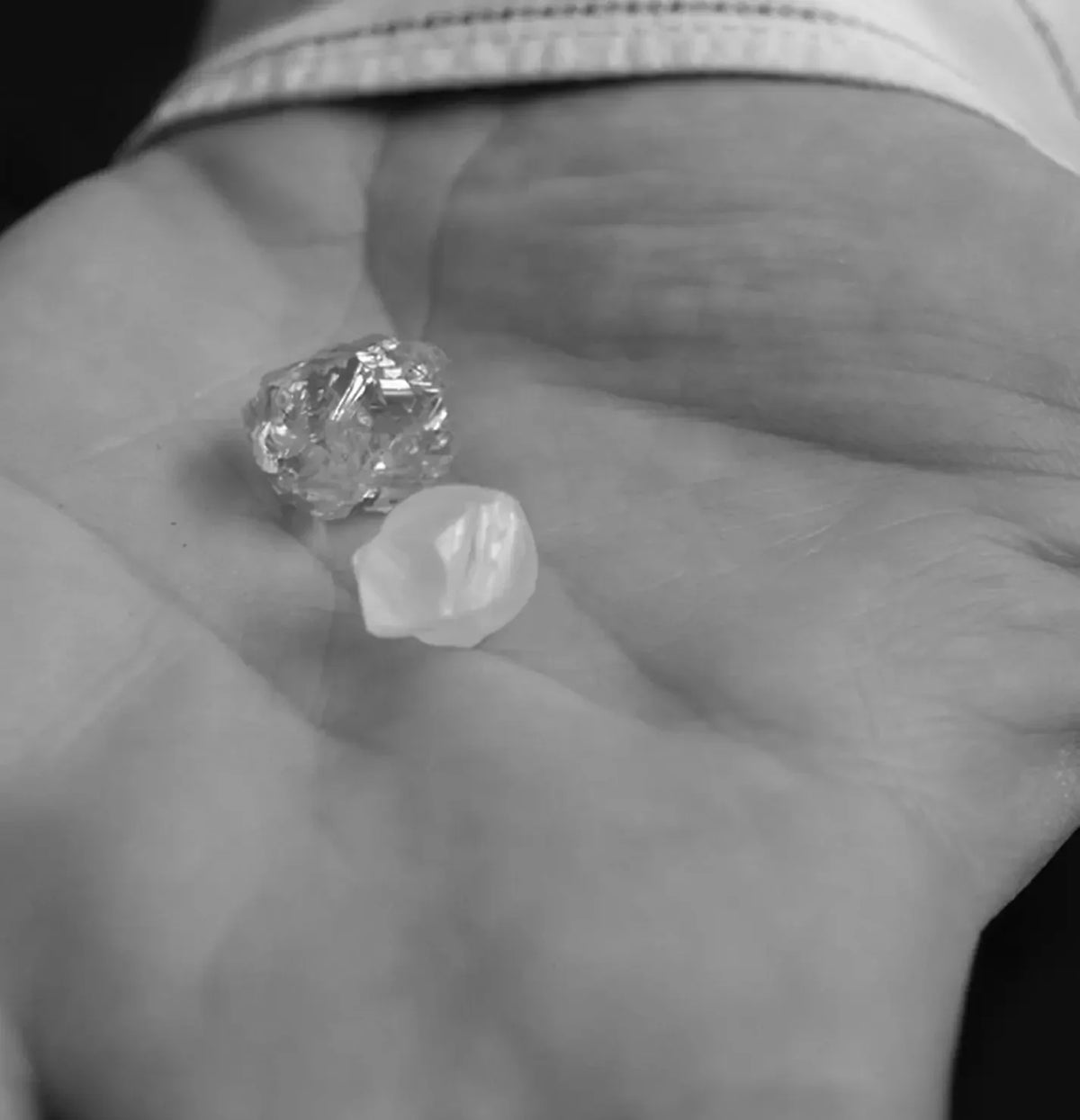
The Sparkling Simplicity of Nature's Diamonds
|
|
Time to read 2 min
|
|
Time to read 2 min
Nature’s most precious gift—diamonds—are the product of immense time, pressure, and geological wonder. Long before they sparkle in our Miami showroom, they form deep beneath the Earth’s mantle, a story written in carbon, forged over billions of years.
Let’s uncover the journey of a diamond from raw element to radiant brilliance.
1. Carbon Source:
All diamonds begin with carbon—either primitive carbon from Earth’s formation or subducted carbon from oceanic crust and carbonates. Some even originate from ancient algae and microorganisms.
2. Depth & Pressure:
Natural diamonds form at depths of 90–120 miles under the Earth’s surface, where pressure exceeds 725,000 psi.
3. Temperature:
The heat needed ranges between 1,832°F and 2,372°F—conditions found only deep in the mantle.
4. Crystal Lattice Formation:
At these depths, carbon atoms bond into a unique isometric-hexoctahedral structure—the reason for diamond’s unmatched hardness.
5. Volcanic Delivery:
Diamonds reach the surface through rapid volcanic eruptions that create kimberlite or lamproite pipes.
6. Preservation & Discovery:
If pressure drops too quickly during ascent, diamonds can revert to graphite. Preserved diamonds are later discovered in Africa, Russia, Canada, and Australia—either in primary deposits or alluvial plains.
Both are carbon. But while diamond forms a dense, three-dimensional tetrahedral lattice, graphite takes a layered form, bonded in flat hexagonal sheets.
Property
Diamond
Graphite
| Hardness | 10 on Mohs scale (hardest) | Soft, used in pencils/lubricants |
| Electrical Conductivity | Poor | Excellent conductor |
| Appearance | Transparent & brilliant | Opaque & black |
| Structure | Tetrahedral (3D) | Hexagonal layers (2D) |
This contrast reveals the power of atomic structure in shaping a material’s behavior.
Crystal System: Cubic (isometric). Most common habit: Octahedral (eight triangular faces). Others include cubes, dodecahedrons, macles (twin crystals), and rare tetrahexahedral forms.
Surface Features: Trigons (tiny triangle etchings), growth zones, and inclusions tell the story of their formation.
Feature
Gem-Quality Diamonds
Industrial Diamonds
| Use | Jewelry | Tools, abrasives, electronics |
| Appearance | Clear, beautiful, rare | Cloudy, flawed |
| Value | High, especially with rare traits | Lower, used for performance |
| Source | Mostly natural & lab-grown | Largely synthetic for efficiency |
Only 20–30% of mined diamonds are gem-quality. Of those, high-color, high-clarity stones over 1 carat are increasingly rare.
Carat – Weight: Larger diamonds are rarer and exponentially more valuable.
Cut – Determines brilliance, fire, and symmetry. Graded from Excellent to Poor.
Color – D (colorless) to Z (light yellow/brown); Fancy Colors like pink and blue are prized.
Clarity – From Flawless to Included; determined by visible inclusions or blemishes under 10x magnification.
Other factors: Fluorescence, Shape, and Treatment history also affect value.
Lab-grown diamonds share physical and chemical traits with natural diamonds but differ in:
Origin: Grown in weeks via HPHT or CVD vs. billions of years naturally
Value: Lab-grown are more affordable, but depreciate rapidly
Environmental Impact: Synthetic production often uses high energy and methane gas, depending on source
Natural diamonds, with ancient inclusions and provenance, remain coveted for their timeless rarity and symbolic value.
Used in:
Oil drilling, grinding, and saw blades
Electronics and semiconductors
Surgical tools and heat sinks
High-pressure physics experiments
Their unmatched hardness makes them essential across modern industries.
Natural diamonds are more than gemstones—they're geological miracles, each with a story billions of years in the making. From the depths of the Earth to the light-filled displays of our Miami boutique, diamonds remain the ultimate expression of nature’s simplicity and sophistication.
Discover gem-grade diamonds hand-selected by our founder, Alon Ruschin, and experience the brilliance of nature’s rarest creation.